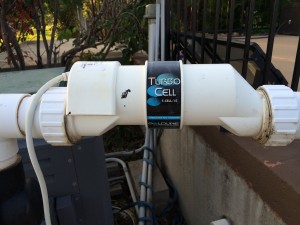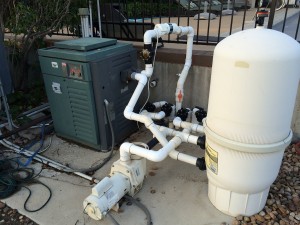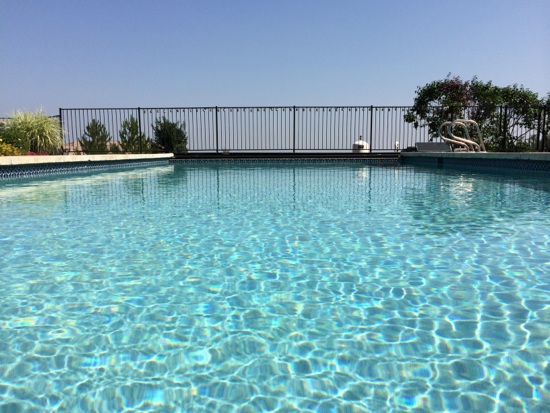Summary
Virtjoule Juice Cellular CT’s are ideal for monitoring pool pump and chlorine generation equipment. Using a Virtjoule Juice Cellular CT sensor, you can now monitor amperage of the pool pump and other electrical components critical to the system such as chlorine generators. This is suitable not only for large pool equipment, but it’s affordable enough to monitor smaller apartment complex pools and even residential pools.
Key Points
Pool pump equipment is often unattended for days. It seems when you need the pool ready for the weekend is when you find out the pump has failed.
The first step in maintaining a healthy pool is keeping the pool pump running. If the pump isn’t running you’ll see that heating, chlorine generation, and water circulation simply stops. What else is there to a pool besides water and people?
Virtjoule Juice Cellular CT’s are uniquely capable of monitoring all the electrical components of a pool plant.
A Small Residential Pool
What you see here is a common residential pool plant setup. There is a gas fired heater, a WhisperFlo pump, Turbo Cell chlorine generator, and a large filter.
In this setup, a single Virtjoule Juice Cellular CT was installed in the disconnect box for the plant. Activity level of both the pump and the chlorine generator can be monitored with just one sensor.
Below is a routine chart generated by Virtjoule showing the activity of both pump and chlorine generator.
It’s plain to see on this chart that there is a base level of around 9 amps that is contributed by the pool pump. The label on this pump says it runs from 8.8 to 9.8 amps, right in the range we’re measuring. This particular pump is a WhisperFlo pump.
The chlorine generator is a model called “Turbo Cell”. The Turbo Cell doesn’t continuously generate chlorine. It intermittently runs depending on the level setting on the cell which is determined by the pool maintenance service, how often the pool is used, and whether or not the pool is covered when not in use.
Chlorine Generator Energy Use
People often ask, “How much energy does my chlorine generator use?” If you search the Internet there are a variety of answers that amount to “It depends.” People do want to know since what you’re doing with a chlorine generator is using electricity to break apart NaCL (salt) to temporarily generate chlorine which kills pathogens in the water. Just as quickly, that chlorine recombines forming salt again.
You may have heard of salt water pools. These aren’t done to mimic the ocean. It’s done as a more economical and environmentally friendly way to produce chlorine. The net result is a pool without chlorine and the chlorine smell and burn when you swim in it. Chlorine generators do cost money to run because it takes electricity to run the cell. Now there is an easy way to quantify how much energy your chlorine generator is using and also whether it’s running or not.
In this example, the chlorine generator is running every 2 hrs for 10 minutes taking roughly 2 amps. That’s 120 minutes at 2 amps on 220 voltage. 2 amps on 220 is 440 watts. Times 2 hrs is 0.880 kWh. That costs you roughly $0.10/day in most places in the US. Virtually nothing.
Pool Pump Energy Use
The pool pump, on the other hand, is where all the electricity cost is going. 9 amps, 220 V is 1,980 watts. 24 hrs/day is 47 kWh per day which is between $4-$5 / day or anywhere from $100 – $150 / month to run depending on your part of the country…and that’s a small pump.
Fault Detection
Most pools have a lot of problems that start when the pool pump shuts down. This can happen for a variety of reasons including lightning storms and pool pump failure. Chlorination and circulation cease. Water quality can get cloudy very quickly. Virtjoule Juice can alert you when your equipment isn’t running by either text message, email, or even voice callout.
Conclusion
With just one Virtjoule Juice Cellular CT, it’s possible to watch over two critical pieces of equipment that keep your pool clean and healthy.
[Randy Cox - CEO and co-founder of Virtjoule - He is the software designer and analytics engineer for Virtjoule Sense sensors. He studied Chemical Engineering and Petroleum Refining at the Colorado School of Mines. You may contact Randy at: randy at virtjoule dot com] – See more at: http://blog.virtjoule.com






|